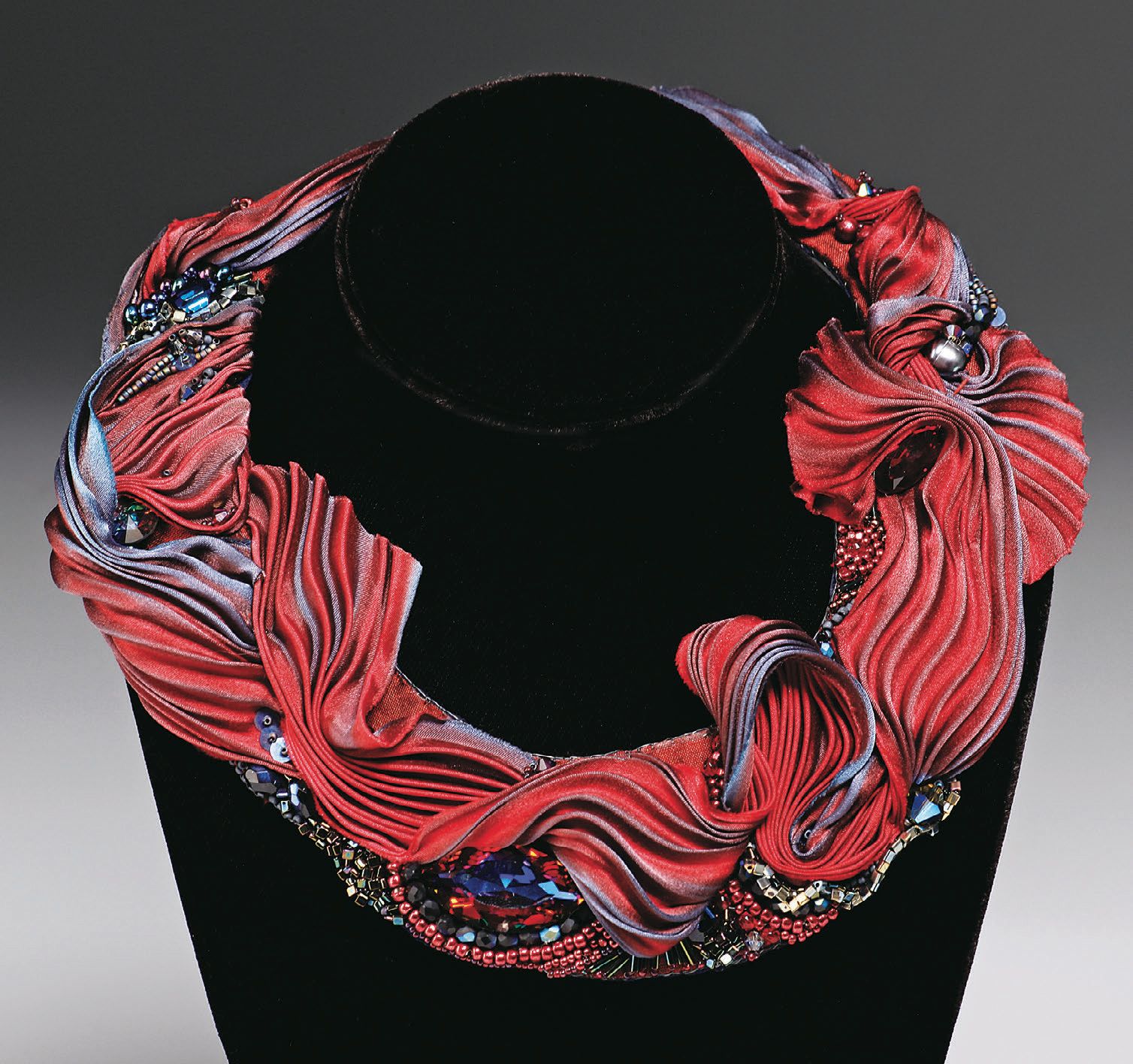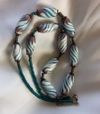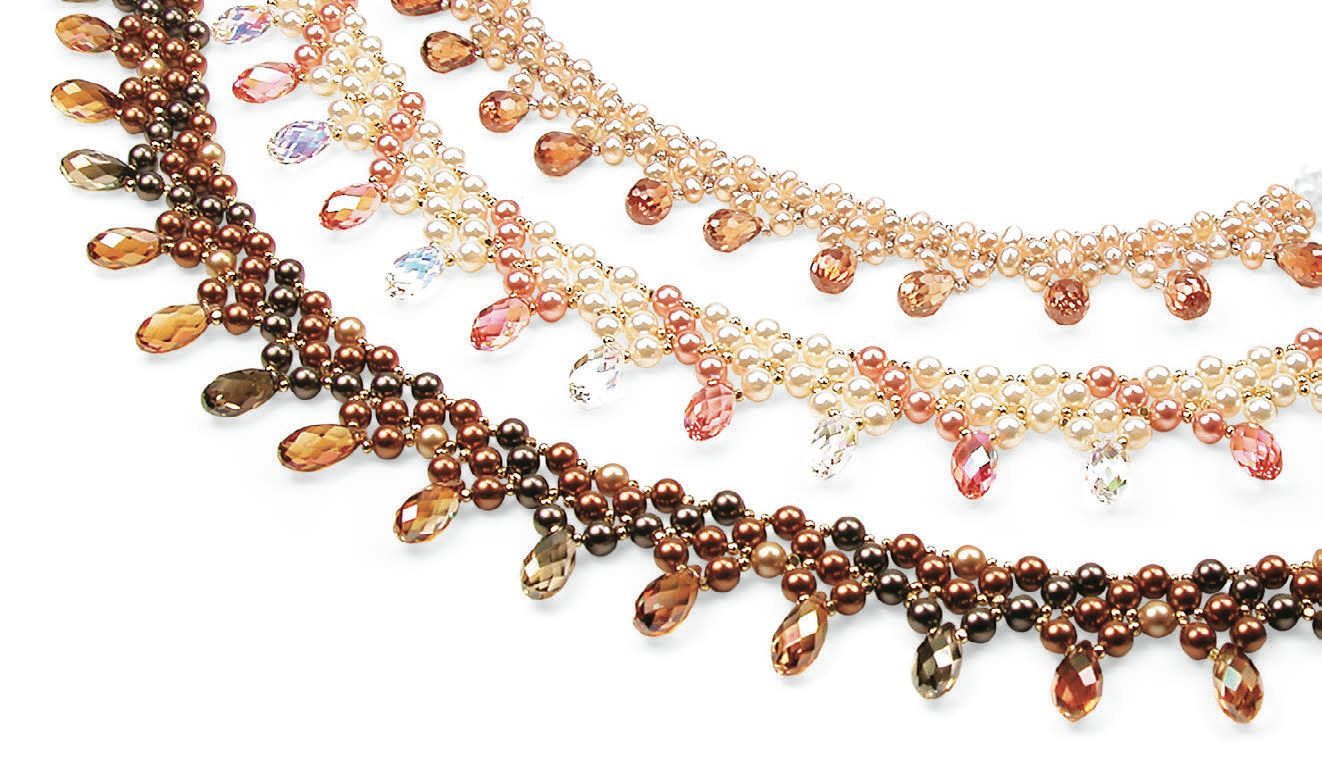Margie Deeb’s book, ‘The Beader’s Guide to Jewelry Design’ offers expert advice on all the different elements of design that go into creating stunning beadwork. so we take a look at this theme from a designer’s perspective. The book publishers, Lark, have been kind enough to allow us to reproduce a section of Margie’s excellent chapter on the subject. You can find out what ‘movement’ means in design and see a few practical examples to help you understand the principles Margie talks about.
“Movement makes art come alive. We know physical movement well, the kind that occurs when beaded fringe sways or metal charms shimmy. Physical movement is obvious. There is, however, another kind of movement—one less tangible, a move- ment that doesn’t physically move. We sense this intangible movement more often than we see it.
Intangible movement occurs when a long, arcing line draws your eye from one end to the other. It engages you in its activity.
It is the movement—physical or intangible— in jewellery that initially calls to and captures the viewer: the sparkle of a reflective facet, the sinuous curve of an element, the beat-like percussion of a repetitive pattern.
Jewellery demands movement. If you can’t incorporate physical movement into a piece, then the intangible form must be present. Without movement, a piece is static and, most likely, boring.
When you consciously develop intangible movement in your work, as Laurie Danch has, you orchestrate the entire piece: how it is both seen and experienced. And you naturally unify the piece.”

When she talks about each concept of design, Margie has teamed up with fellow beader, Leslie Frumin to use actual examples of jewellery to explain her points. To illustrate the concept of movement, Margie used a design by Leslie, called ‘Putting on the Ritz”, chosen for its simplicity and elegance.
“Understand that little to no movement is not negative. Sometimes this may be exactly what you want: quiet understatement. In a monochromatic palette, Putting On the Ritz delivers this restrained sophistication (figure 1). In figure 2 Leslie emphasised the diagonal repetition, each peach row guiding your eye to the peach drop. Movement loops around the foundation of the pearls and circles fluidly around the neck. The subtle “stripes” make it a hint more casual.

In figure 3 we emphasized the inverted triangular repetition, with each copper-hued V pointing to a copper hued drop. A third colour entices your eye to hop about, seeking the pale accents. Livelier, less graceful movement, creates a more playful piece.
Movement differs in each of these versions. How much and the kind of movement you want to creae is your choice. You'll do your best when the choice is carefully planned.
Over to you – you can use the projects in found here on Beading.live and in Bead & Jewellery magazine to think about how movement has been used in the design.Is it tangible or intangible movement and how does it add to your enjoyment of the design?
Look for the intangible, visual movment everywhere: jewellery, photo, the design of magazine spreads, the composition you see as you look out of your window.
What creates the movement...
• The direction of line or shape? • pattern (geometric or organic or combination)? • texture? • colour (placement or actual hues)?
Step back and look at jewellery you've designed from a distance
• What kind of rhythm, if any, is present? • What kind of movement does the overall piece present? • What kind of rhythm, if any, do you sense?
Design a piece of jewellery that features movement.
• What king of movement will you focus on first - direction? pattern? texture? colour? • Will you use more than one kind of movement? • Do you want the viewer to move steadily on a path to a fulfilling conclusion? Or amble in sinuous curves throughout the entire design? • How can you employ pattern or texture to reach those ends? • What kind of rhthym do you want viewers to feel when they see this?


